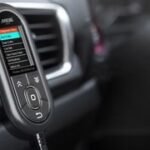Understanding your Honda’s onboard diagnostics system is crucial for modern car maintenance and repair. OBD2, or On-Board Diagnostics II, is a standardized system that provides access to a wealth of information about your vehicle’s health and performance. But When Did Honda Start Using Obd2 in their vehicles? This is a common question for car enthusiasts and owners alike, especially when looking to utilize OBD2 scanners and software for diagnostics or performance monitoring.
The introduction of OBD2 was largely driven by environmental regulations in the United States. The California Air Resources Board (CARB) was a major force behind the standardization, aiming to improve vehicle emissions control and monitoring. The mandate for OBD2 essentially came into full effect in 1996 in the United States. This meant that all cars and light trucks manufactured for sale in the US from the 1996 model year onwards were required to be OBD2 compliant.
Honda, as a major automotive manufacturer committed to both innovation and environmental responsibility, was among the automakers that embraced OBD2 from the outset. Therefore, you can confidently expect that virtually all Honda vehicles manufactured from 1996 onwards are equipped with OBD2 systems. This includes popular models like the Civic, Accord, CR-V, and many others across their lineup.
Why is OBD2 important for Honda owners?
OBD2 provides numerous benefits:
- Enhanced Diagnostics: OBD2 systems monitor a wide range of vehicle parameters related to emissions, engine performance, transmission, and more. This allows for more accurate and efficient diagnosis of problems.
- Check Engine Light Insights: When your “Check Engine Light” illuminates, your OBD2 system stores diagnostic trouble codes (DTCs). These codes can be read using a scanner, providing valuable clues about the nature of the problem.
- DIY and Professional Repair: OBD2 scanners are readily available and relatively affordable, empowering car owners to perform basic diagnostics themselves. For professional mechanics, OBD2 is an indispensable tool for efficient and accurate repairs.
- Performance Monitoring: Beyond diagnostics, OBD2 data can be used for performance monitoring. Apps and devices can read real-time data like engine speed, coolant temperature, fuel trims, and more, useful for enthusiasts and tuners.
Utilizing OBD2 with your Honda
For Honda owners looking to leverage OBD2, there are many options available. As mentioned in forums and online communities, tools like the Car Scanner app, when paired with an OBD2 adapter, can access and display a wealth of data from your Honda’s OBD2 system.
While generic OBD2 scanners will work with Hondas, more specialized apps and profiles can unlock deeper insights and access manufacturer-specific parameters. For example, as discussed in online forums, custom profiles for apps like Car Scanner have been developed for specific Honda models like the Clarity PHEV, offering access to parameters beyond the standard OBD2 set. These custom profiles can provide data on battery capacity, air conditioning pressure, and other vehicle-specific information.
Conclusion
Honda began implementing OBD2 in its vehicles starting with the 1996 model year, in line with industry-wide adoption driven by US regulations. This standardization has revolutionized vehicle diagnostics and maintenance. For Honda owners, understanding and utilizing OBD2 opens up a world of possibilities, from diagnosing simple issues at home to gaining deeper insights into their vehicle’s performance. Whether you’re a seasoned mechanic or a casual car owner, OBD2 is an essential aspect of modern Honda vehicle ownership.

